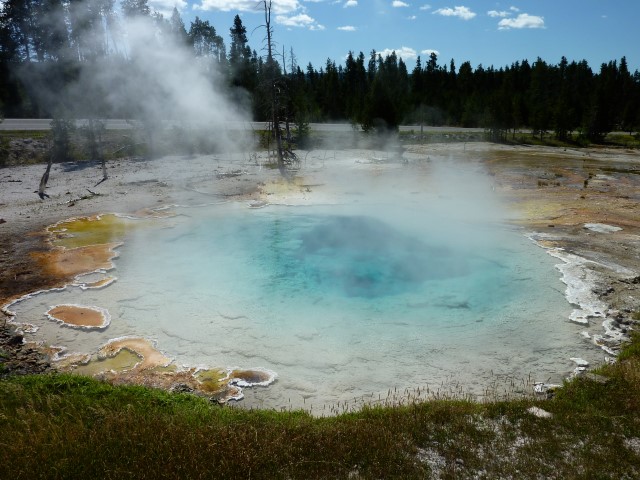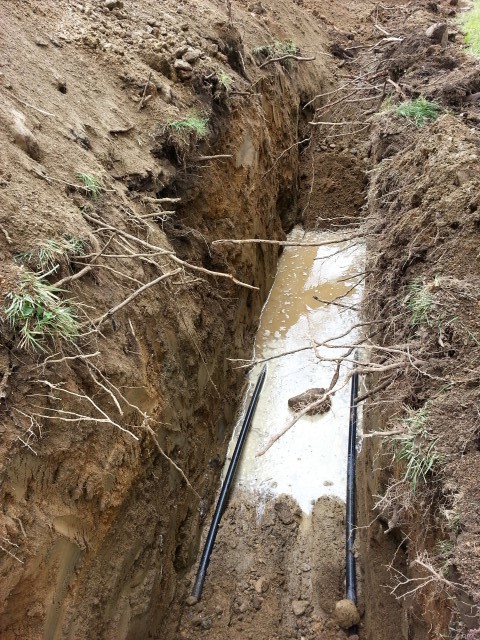When you’re thinking about the best way to save up money to retire, what’s the first thing that comes to mind? If you’re like most people, I bet you never think along the lines of “how can I get the most out of heating and cooling costs.” People talk about not having money to burn, but if we think about energy being traded on markets around the world, we are in a sense burning money to stay comfortable.
What’s the #1 way to reduce heating and cooling costs? Move to somewhere it’s more comfortable! Most people don’t think about how much they spend to maintain the temperature where they live, nor do they factor that into retirement costs. But if you like where you live, or if moving isn’t an option, what other options do you have?
The first option is obvious to everyone, lower the heat in the winter, and raise the air conditioning in the summer. The new generation of “smart” thermostats are basically glorified on/off switches that save you money by remembering to raise and lower the temperature when you aren’t around to benefit from the money you’re burning to heat your place. There are many expensive thermostats on the market to help with this, such the Nest, the ecobee3, and the Lyric. There are also cheaper options on the market that still offer a wide range of options such as remote access, so you can verify you system is working when you’re out of town, or to turn the heat down if you forgot before you left for the airport.
Even with smart thermostats your options are limited. If you spend $2,000 on oil or propane to heat your house, and turning down the thermostat saves you 5% to 15%, you’re managing to save $100-$300 a year. Clearly the thermostats can pay for themselves if you program them properly, but even if you set your heat to 40, you still have to burn money to stay warm.

Programmable thermostats work for two reasons. Hang on, it’s time for some rocket science! No two houses are the same, even in a cookie-cutter housing development. Factors that impact the heating and cooling load include the number of windows and doors, the condition of weather sealing, the direction the house faces, the number of trees around the house, indoor plants, cooking habits, and the number of heat generating people and appliances. A family of 7 will burn less fuel in a house compared to a pair of empty nesters. Based on the factors above, engineers perform a Manual J to determine the heating and cooling load of the house.
So what are the two reasons behind why programmable thermostats work? The first is your HVAC system is designed to maintain a temperature on the hottest day of the year and the coldest day of the year. What that means is on every day that isn’t the hottest or coldest day of the year, your system is over-sized and has some excess capacity. The second reason they work is because upgrading to larger HVAC equipment is relatively inexpensive, and designers would rather err on the side of caution, even it if costs you more money in the long run – both in initial costs and in operating expenses, and in reduced comfort. Check out the costs of gas furnaces at Home Depot, a 40,000 BTU furnace is $893, a 60,000 BTU furnace is $949, and a 80,000 BTU furnace is $1,023. For $130 more dollars, or 14.6% more money you can get a 100% “more powerful” furnace! What a deal!
Most people realize when their furnace or air conditioner is running it’s costing them money. We then start to associate longer run times with higher costs, and therefore falsely assume that a system that runs for a shorter period of time costs less. Think of it like a fire hydrant versus a spray bottle. Both will cool you down, but misting yourself for an hour will certainly use less water than opening up a hydrant for a minute. If your HVAC system is properly sized it should be running near-constantly on the hottest and coldest days of the year.
So now you know why programmable thermostats work: our systems are usually over-sized, and they have excess capacity on days that aren’t the hottest or coldest of the year. We can’t do anything about the latter, but we can remember the first point when it comes time to replace an aging system. The most efficient thing we can do is rip out our grossly over-sized systems and install equipment that’s sized properly, but that’s not as economical as just buying a $100-$300 thermostat… or is it?
On its own, an over-sized system may not cost much more to run in the long run, though you do run the risk of having a house that feels like a cave in the summer – cold and clammy, or experience wide temperature swings in the winter. Still, what if you could save money and replace the fossil fuel burning furnace in your house and get rid of the air conditioning unit out back?
Let me introduce you to the ground source heat pump, often known as a geothermal heat pump. The savings from installing a ground source heat pump are significant, but some people think the cost to install are significant as well! Here’s my story.

In 2012 I moved to a new house with oil heat. Living in Connecticut, the winters are often pretty cold, and despite using programmable thermostats set to 67 when I was home, I managed to use over $4,000 in oil from December to March. It didn’t take a rocket scientist to realize this was not only unsustainable, but that this money was keeping me from achieving financial independence. That’s when I learned more about ground source heat pumps.
While a heat pump might sound like a complex term, when you flip the words it makes sense, it’s a way to pump heat. You probably have a few of them already in your life in the form of a refrigerator that pumps heat from inside the unit to the outside, your car air conditioner that pumps heat from inside your car to the outside, and your house A/C that does the same. These are all air source heat pumps, because the heat is transferred via air. A ground source heat pump is called that because it doesn’t transfer the heat to the air (when cooling), but to the ground. Some folks (me included) refer to them as geothermal heat pumps, probably because it sounds cooler. A lot of people hate this term though because geothermal relates to temperatures deep in the ground (or near the ground if you happen to be near a place like Yellowstone). Ground source heat pumps amazingly get their heat from the sun, which warms the ground all year long.

A lot of people can’t wrap their heads around how a heat pump works. “How can the 40 degree ground heat my 60 degree house to 70 degrees?” The answer, oddly enough, is sorcery. When you install a ground source heat pump, a sorcerer will show up and… wait a minute, it’s not sorcery, it’s science! A heat pump only needs a few basic things to work. When you compress a gas, it gets hotter (or rejects heat). When you decompress or allow it to expand, it gets colder (or absorbs heat). Ever take a can of compressed air, turn it upside down, and spray it? Try it, you’ll freeze whatever you aim the nozzle at. This is the principle of how your air conditioning system works. In a lot of areas we only use heat pumps to cool houses down, and instead rely on burning fossil fuels for heating. Part of the reason is because it’s hard to take heat from cold areas. It’s also hard to move heat into hot areas, so on the hottest days of the summer your air conditioner is also the least efficient at cooling down your house. If only there was a better way!
There is, don’t use the outside air to heat and cool your house, use the ground! The ground temperature stays relatively constant, so your ground source heat pump air conditioner is just as efficient during a 78 degree day as it is during a 100 degree day. If you use a geothermal heat pump to heat your house, it’s as efficient during a 50 degree day as it is during a -10 degree day.

So what’s the catch?
Money! Geothermal systems can cost a pretty penny to install. Doing much of the work myself, I managed to install a 6-ton system for around $12,000. After tax credits, rebates, and selling my old system, I was out around $6,050. I’ve heard of people receiving quotes of $30,000 to install a large system. Don’t let these numbers scare you though. It now costs me under $1,000 a year to heat and cool my house. Even if I bought that $30,000 system, that’s some serious savings, as after incentives I’d have spent $18,650. Even if what I spent on oil for 3 months was the total amount I spent to heat and cool my house for a year, in 6 years I would have broken even, and in 20 years I’d be $41,350 ahead.
Don’t get too hung up on the simple math, there are plenty of ways to get more realistic estimates of savings. For example, what if someone keeps a wasteful system, but instead invested $30,000 in the market with an estimated 7% annual return? Though they would come out ahead with a ground source heat pump, there are always multiple factors to consider. How many opportunities do you have to invest $18k and get a 17% return every year on your investment? How long do you plan on staying in your house? Do you want to get rid of fossil fuels in your house? What will adding an efficient system do to the value of your house? Have you had an energy audit performed?
So what’s keeping you from investigating how you can reduce what is likely your largest expense in running your house? Will we ever follow the lead of other countries like Denmark and ban the installation of fossil fuel burning heating appliances?
If you have any questions or comments, you can reach out below or continue the discussion in the forum. If you are interested in receiving a notification of new posts, you can subscribe here.

Permalink
This is a great article – technically accurate and clear. It shows why people who have geothermal installed the right way are very happy with their improved home comfort and low heating and cooling cost.
Permalink
Thanks Pete! After seeing just how much money geothermal saved me, I’m always on the lookout for other technologies I don’t know about to save a few dollars. Aeroseal was another product I was really impressed with that not a lot of folks have heard of before.
Permalink
Please tell me why my neighbor, who has a fairly modern geothermal unit, pays an average of $350 per month (electricity) to heat/cool his home. I heat and cool the same square footage and between Natural Gas and electricity I spend on average $150. I can’t see how a geothermal will ever be as efficient.
Permalink
Thanks for the comment. There could be a couple of reasons why your neighbor is spending $350 a month, and if it’s related to a geothermal system, my guess would be something isn’t installed correctly. A 3 ton system could use 2,800 watts in second stage, and 1,800 watts in first stage (it could also use less). Assuming it’s in second stage 100% of the time, at 16.5 cents a kilowatt hour, that’s 757 hours of run time a month for $350, or 25 hours a day.
If I didn’t have solar, my total electrical usage would be around $165 a month for a 3,750 sq. foot house in Connecticut (with solar it’s $62 a month, and $20 of that is the customer service fee). I don’t know your total square footage nor location to compare energy usage, but you can see why it seems like your neighbor’s system is installed incorrectly if the high electrical usage isn’t coming from something else.